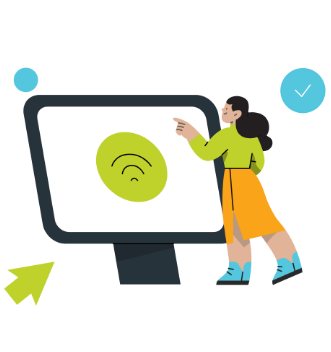I don't recall exactly when we adopted the term "modern learner," but it might have been around 2014 when Bersin by Deloitte published the well-known infographic, "Meet the Modern Learner." Words like overwhelmed, distracted, and impatient apply to most of us, most of the time. And who could argue that employees have a very small percentage of time in their 480-minute workdays to focus on training and development?
Heavy workloads, back-to-back meetings, and the magnetic attraction of our smartphones, with the constant barrage of emails and instant messages, make it difficult for leaders to focus on the task at hand, yet alone training and development.
What has changed since 2014? The battle for employees' time and attention has not abated. If anything, it has intensified. Yet there have been some positive indications that momentum is shifting in the right direction. There is evidence that budget constraints are no longer the top challenge keeping learning and development professionals awake at night. And there is no shortage of emerging technologies (such as augmented reality, virtual reality, and artificial intelligence) opening a world of exciting possibilities for learning and development.
This is good news. According to the Global Leadership Forecast 2018, the link between learning programs and leader quality is 46 percent stronger when technology is heavily used. Technology also improves back-to-the job application, raising it from 55 percent with minimal technology use to 63 percent with extensive use.
Despite these advances, according to the 2019 Deloitte Global Human Capital Trends survey, the number one trend for this year is the need for organizations to change the way people learn. But how do we do that?
Here are four ways to craft an effective learning experience:
1. Recognize the similarities between learners
First, maybe we should drop the adjective "modern" when we talk about learners, particularly since we know that most people want the same things. In today's workplace, most employees are tech-savvy and want to connect with their colleagues and other experts in the organization to learn and solve problems. As pointed out in the Global Leadership Forecast finding cited above, there is little difference across the various generations in the workplace in terms of how they prefer to learn. Personalization tops the lists, which tells us that learning, regardless of how it is delivered or consumed, must be relevant.
I was reminded of this recently with a well-intended gift of a cooking class for my husband. While our family long ago crowned him a "chef extraordinaire," he wanted to perfect his ability to prepare Asian cuisine. To say that the first two lessons were disappointing was an understatement. The teacher was very knowledgeable and engaging, and my husband enjoyed spending time with his classmates. Unfortunately, the lessons were very basic and, therefore, not relevant to him. He learned nothing new. He said that he spent two hours of his precious time not learning.
This experience violated one of the basic tenets of learning that my daughter's kindergarten teacher shared with me many years ago: Always use time and materials wisely.
2. Personalization is key
What does this mean in terms of workplace learning? One size does not fit all, especially when leaders around the world are demanding personalization. We can use informal and formal assessments to increase involvement and engagement by presenting a clearer picture of their strengths and gaps. This ensures learners spend the limited time they have where it's needed most. We are helping them use their time wisely.
In the case of my husband's cooking class, the good news was that by week number three the instructor recognized he had already mastered the basics, and she increased his engagement by pairing him with the most inexperienced learners. He was motivated to come back because the instructor recognized and was tapping into his strengths. This simple technique is one that a skilled facilitator can use to personalize the experience for everyone, not just modern learners.
The same 25,000 plus leaders who responded to the 2018 Global Leadership Forecast who told us they wanted personalization also expressed a strong preference for formal workshops, training courses, and seminars. This might surprise you given the number of studies showing a decline in budgets spent on classroom training as the spending for online learning continues to rise.
But should it surprise us? We have all grown up learning with and from others. Humans are wired for conversations. Did we lose sight of this when we became so focused on the modern learner? A well-designed and strongly facilitated classroom session might well be the learning oasis leaders need in a workplace filled with constant disruptions and distractions.
3. Embrace emerging technologies
I believe we can safely conclude that formal classroom training—whether it be in person or virtual—will be around for a while as one of the critical components of a contemporary blended learning experience. However, the experience itself must change to better meet the expectations of the learners, as well as the realities of the business.
The classroom should be the place for interaction and collaboration; where the mantra is to learn by doing, versus learn by listening to a facilitator. We can fuel this learning engine by using formal assessments and self-insights to ensure participants are primed for learning before they walk in the door. Facilitators can further enrich and personalize the experience by injecting technology into the classroom. Using a few quick, targeted polling questions that participants answer with smartphones, facilitators gain real-time insights that inform how best to use precious classroom time.
Emerging technologies can also be used to create a unique and memorable classroom experience. One example is virtual reality (VR), which will soon hit a critical mass as the costs associated with VR continue to go down. DDI recently conducted several VR pilots in which people practiced challenging coaching situations, along with a more traditional skill practice. More than 70 percent felt more confident in their coaching ability after the VR experience. At the same time, pilot participants placed high value on the more traditional skill practice of their own coaching situation with a peer. This confirms what we already know about participants' preferences: a blended experience is still the best experience.
4. Keep up with technological trends
While formal classroom training is still a much-desired and, when done well, highly effective learning method, we cannot underestimate the increasingly important role of technology for everyone.
Organizations continue to invest more of their learning budgets on technology. These investments cover the spectrum from significant investments in platforms like contemporary LMS's and learning experience platforms to less costly, but just as important, investments in offerings that include videos and microcourses that can be accessed from those platforms. These micro-learning approaches can be used in between and following more formal learning events to build upon what leaders already know. Reinforcing the training with spaced learning can help to stave off the Ebbinghaus Forgetting Curve—research that highlights how rapidly we forget newly learned information.
On-demand, mobile learning is a must-have in today's workplace, where informal learning is happening all the time. In fact, the staggering number of mobile devices used in and outside of the workplace has made it almost too easy to access any learning, anytime from anywhere. Given the limited amount of time leaders must spend on learning, let's help them use that time wisely by giving them access to what they need, when they need it.
The "what" should address individual development needs aligned with the skills required to address the organization's top business priorities, versus hundreds of online offerings leaders don't have time to sort through, yet alone use.
Recently, I started to list the variety of learning approaches, formal and informal, online and offline, at our disposal today, and came up with at least 30 of them. If we focus our efforts on blending the experience, not just the technology, we can meet the needs of all learners—not just the ones we think of as "modern."
With a DDI leadership development subscription, you have all the content and tools to create powerful learning experiences.
Janice Burns is Vice President, Product Manager, at DDI. She works with organizations around the world to achieve business results through strong leaders, and is an experienced presenter on a variety of topics, including the design and implementation of learning journeys and blended learning best practices. Her passion is to help frontline leaders get the most out of every minute they carve out for development. Janice is a consummate shopper, particularly for shoes, and loves to attend auctions with her husband.
Topics covered in this blog


